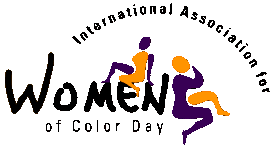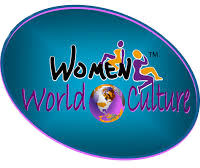WomenWorldCulture Resources & Information
- Hits: 5091
- WomenWorldCulture Ads for Employment, Consultants, Interns, Volunteers
- WomenWorldCulture Directory of Editors
- Public Human Resources Ads
- Hits: 15453
- Hits: 4985
Disability, Disabled,
Disability in the arts is an aspect within various arts disciplines of inclusive practices involving disability, and manifests itself in the output and mission of some stage and modern dance performing-arts companies, as well as the subject matter of individual works of art, such as the work of specific painters and those who draw.
Disability in the arts is distinguished from disability art in that it refers to art that includes disabled people, whether in themes, performance, or the creation of the artwork, rather than works focusing on disability as the central theme. It[specify] can also refer to work that is made as a political act toward shaping a new community, fostering disability culture:
People with disabilities sometimes participate in artistic activities as part of expressive therapy (also known as "expressive arts therapy" or "creative arts therapy"). Expressive therapy may take the form of writing therapy, music therapy, drama therapy, or another artistic method. While creativity and artistic expression are important parts of expressive therapy, they are secondary to the goal of achieving a therapeutic benefit. This article describes disability in the arts where artistic achievement is the primary goal.
Source: Wikipedia
- 1Performing arts
- 2Film
- 3Visual Arts
- 4Literature
- 5Accessibility of arts and cultural facilities and programs
-
6Accessibility organizations for the arts
- 6.1United Kingdom
- 6.2United States
New Thinking and Discussions
New Assistive Technologies and Innovations
Dance, Literature, Music, Theater and Visual Arts
-
DanceAbility International
Joint Forces Dance Company’s mission is to encourage the evolution of contemporary dance and provide ways for people to connect through dance. This mission is accomplished through the work of DanceAbility International, contact improvisation workshops and events, and performances.
-
The work of JFDC creates inclusive communities through dance.
-
- Hits: 4557
- Tips for Writers
- Note: Affordable Editorial Support for Unpublished Writers Available for Members Only--See Member Benefits
- Hits: 4084
- Through the years, "giftedness" has come to be recognized as a term that is not limited in application to the few or to children alone.
- Giftedness has grown in being understood as an aspect of human beings from childhood, in adulthood and throughout life.
- Hits: 4437
Testing for Credit and Credit for Experience can help you save thousands of dollars and years of time. This is especially helpful
- Hits: 4226
- Recommendations of Books and Online Publications
- Accessible by Both Free Public Access and Members
- Hits: 4143
- Facts and Data; Available Help; Appropriate Responses; Documentation.
- Suggestions for Individual Civil Rights Questions by Email of Members Only. Suggestions may include information on how to contact civil rights enforcement agencies and civil rights organizations with public records of work on these kinds of discrimination which includes investigation of complaints.
Read more: Discrimination in Education, Employment and Housing →



